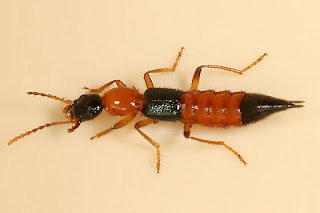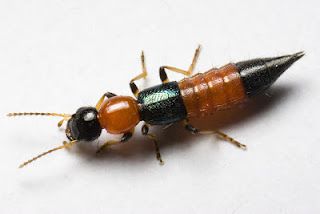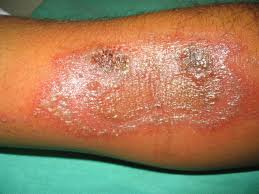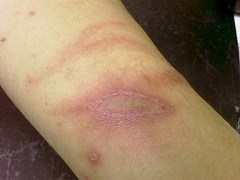What You Should Know About Tomcat Infection or Paederus Dermatitis?
Fluid from Paederus or rove beetles can cause an irritant skin rash called “Paederus Dermatitis”.
The beetle
An adult beetle is approximately 1 cm long and 0.5-1 mm wide. They are striped black and orange/ red with the head being black, the thorax (mid section) orange/red, and body section alternating black and orange/red.
Paederus beetles live in moist habitats, such as paddy fields. During the daytime, the adult beetles are often found searching for prey or resting on vegetation, while on warm nights, they have been known to fly in large numbers, particularly after heavy rains or floods. They are attracted by light sources.
They do not bite or sting people. However if the beetles are crushed, they release a chemical called “paederin”, which is irritating to the skin and eyes.
Symptoms
If the fluid is not immediately washed off, about 12 to 36 hours after contact, an itchy, red, painful and blistering rash (“dermatitis”) appears. The rash appears wherever the chemical touched the skin.
If paederin touches the eye, it can be very painful, cause inflammation (“conjunctivitis”, “keratoconjunctivitis”, “Nairobi eye”) and in severe cases even temporary blindness.
Treatment
Treatment is to remove the irritant as quickly as possible, by washing the area with soap and water. Immediately wash any areas of skin that came into contact with the beetle.
If the eye is involved, flush with clean water or use an eye bath.
If a rash develops, the blistered site should be treated with cold, wet compresses. Calamine lotion or occasionally a mild steroid cream may be recommended.
The rash usually heals completely in about two weeks.
Risk for travelers
Paederus or rove beetles, also known as “tomcat” in Indonesia, are distributed globally.
Prevention
Travellers should take precautions against coming into contact with the insects. Avoid their habitat as much as is practically possible. Learn to recognise the Paederus beetles. If a beetle does land on you, do not crush it, and do not touch or rub your eyes. Try to remove it gently – blow it off, or try to get the beetle to walk on to a piece of paper.
If likely to be in areas where the beetle is:
• Cover as much skin as is practically possible – wear long sleeves and long pants.
• Ideally choose accommodation with screens on windows and doors. Keep the windows and doors closed.
• Switch off lights when possible.
• Sleeping under a bed net will also reduce the chances of a beetle touching you while you sleep.
• Check your room for beetles before going to bed.
• If beetles are present, spray the room with insecticide. Remove the carcasses without touching them and be careful not to crush them.





